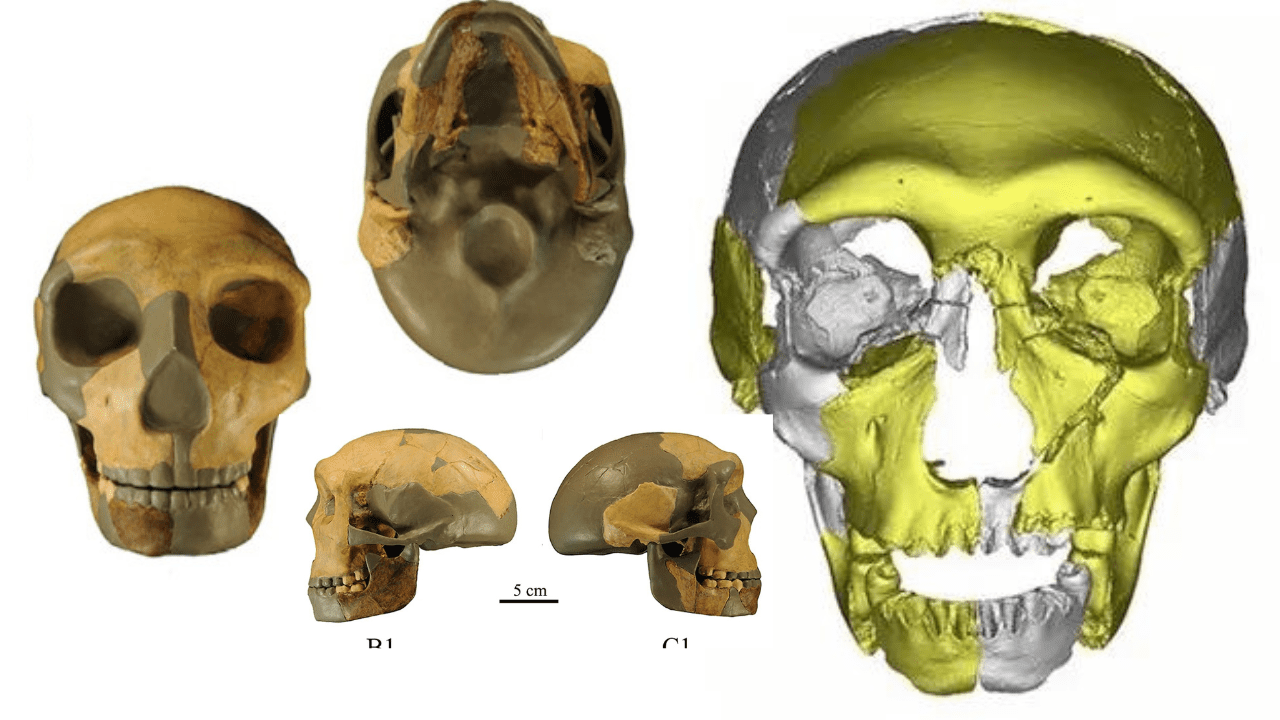New Human Species Found | The Fossil Opens a New Stage in Evolution!
Our understanding of human evolution, a story written in the language of bones, just received an unexpected twist. A recently unearthed jawbone from a cave in the Hualongdong region of eastern China is urging scientists to rethink our evolutionary tree, perhaps even adding another branch to it! There are mysteries surrounding the 300,000-year-old fossilized jawbone. Let’s dive in to learn more about this new human species found! An Ancient Relic of History This ancient skull, bearing an age of a staggering 300,000 years, holds within it a tale of our ancestors. Notably, it’s the same age as the oldest-known skull of our species, homo sapiens. But before we jump to conclusions, this relic has a fascinating secret: it isn’t quite like us, or like any…
Our understanding of human evolution, a story written in the language of bones, just received an unexpected twist. A recently unearthed jawbone from a cave in the Hualongdong region of eastern China is urging scientists to rethink our evolutionary tree, perhaps even adding another branch to it! There are mysteries surrounding the 300,000-year-old fossilized jawbone. Let’s dive in to learn more about this new human species found!
An Ancient Relic of History
This ancient skull, bearing an age of a staggering 300,000 years, holds within it a tale of our ancestors. Notably, it’s the same age as the oldest-known skull of our species, homo sapiens. But before we jump to conclusions, this relic has a fascinating secret: it isn’t quite like us, or like any other human species known!
A fossilized jawbone discovered in a cave in eastern China bears a curious mix of ancient and modern features, according to a detailed analysis that compares it with dozens of other human specimens https://t.co/X9DsD4kcZl
— nature (@Nature) September 18, 2023
A Mosaic of Ancestral Features
At first glance, the Hualongdong skull, christened HLD 6, showcases an uncanny resemblance to modern humans. Its flat face could easily pass as one of ours. But a closer examination reveals that it lacks a “true chin.” This intriguing combination hints at ancestral ties, potentially with the ancient homo erectus species.
Delving deeper into the analysis, the waters become murkier. The HLD 6 skull is like a tapestry woven with features of not just homo sapiens and homo erectus, but also the Denisovans—an early human species closely related to the Neanderthals. This remarkable “mosaic” of characteristics left researchers scratching their heads. Does the HLD 6 skull belong to one of these known species or does it represent an entirely new species, a chapter in the evolutionary saga we were unaware of?
Other Enigmatic Discoveries from China
China, with its rich layers of history buried deep within its lands, has been a treasure trove for early human fossils in recent years. Some of these, like the 200,000-year-old “Dali Man,” have perplexed scientists. Is the Dali Man a rudimentary form of homo sapiens or an advanced version of homo erectus?
Moreover, a mysterious skull unearthed in Harbin, Northern China, might also be a representative of a previously unknown human species. Labeled as ‘homo longi‘ in a 2018 study and endearingly nicknamed “Dragon Man,” this find has sparked its share of debate in the scientific community.
Researchers have now started connecting the dots. Could the Harbin skull, the Dali Man, and our HLD 6 skull be related? Could they represent a new lineage, parallel to homo sapiens?

DNA: The Underlying Story
But it’s not just the fossils telling this tale. DNA, the blueprint of life, offers its chapters. A 2014 study unveiled a gripping discovery: the genome of a Neanderthal woman contained genes from several early human species. It seems our ancient relatives might have mingled and interbred more than we imagined. Most intriguingly, this study also hinted at DNA from a completely unidentified ancestor.
The Enigma of HLD 6
One might argue that the unique features of the HLD 6 skull are due to its owner’s young age. Estimated to have been around 12-13 years old at the time of death, could the skull’s distinctive nature be due to its juvenile status? However, even when compared with skulls from other juvenile humans, HLD 6 stands apart.
So, the pressing question remains: Have we stumbled upon a new link in the human evolutionary chain?
Conclusion
Researchers caution that while the HLD 6 find is undoubtedly thrilling, we’re far from drawing concrete conclusions. More research, more fossils, and perhaps more DNA analysis will be crucial in unearthing the mysteries of our past.
Our story, the tale of humanity, is still being written. With every fossil we unearth, with every DNA strand we decode, we come one step closer to understanding where we come from. The Hualongdong jawbone serves as a reminder of how intricate and intertwined our history is—and how much more there is left to discover.
Stay tuned, dear readers, as we journey through time and piece together the puzzles of our ancestry. The past is still full of secrets, and we’re just getting started on uncovering them.






